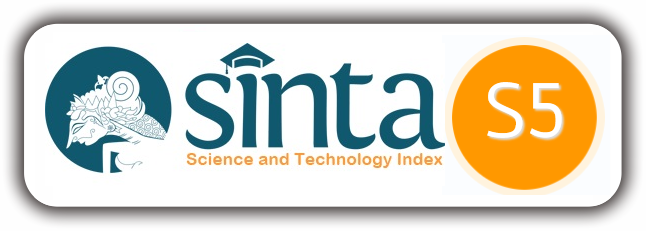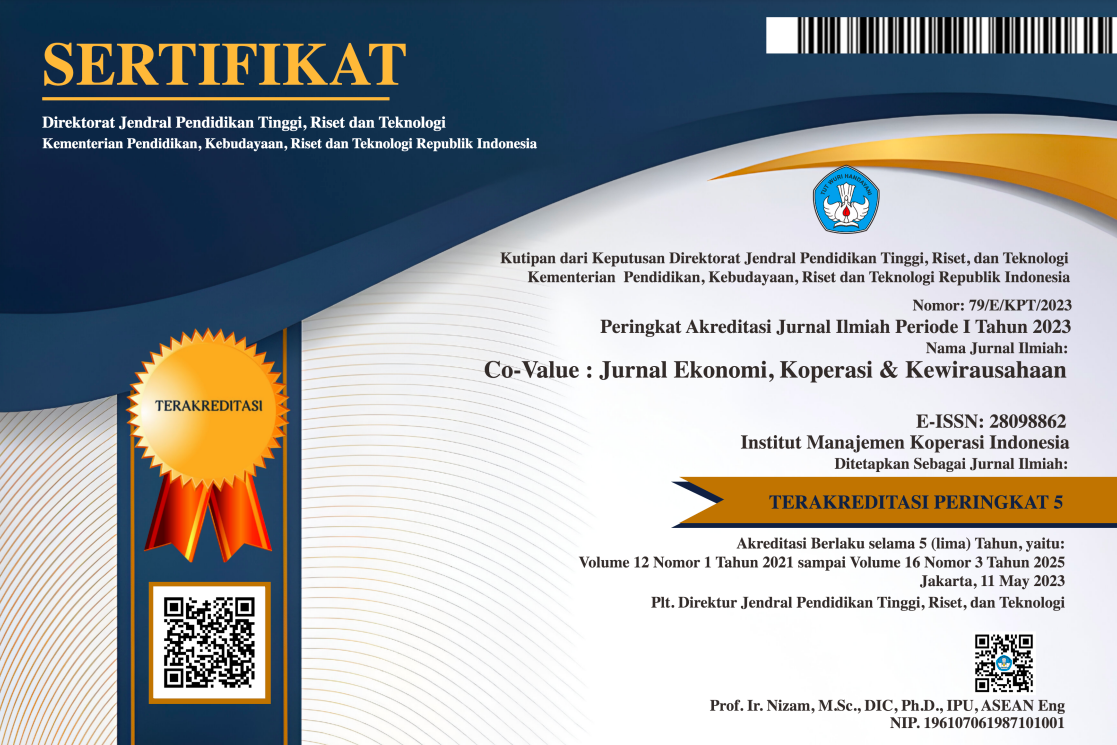Pengembangan Produk Wisata Unggulan Untuk Meningkatkan Daya Tarik Pangandaran
Keywords:
Diversifikasi, Ekowisata, Model Pentahelix, Pariwisata Berkelanjutan, Pemasaran DigitalAbstract
Penelitian ini bertujuan untuk menganalisis strategi diversifikasi produk wisata dan pemasaran destinasi Pangandaran guna meningkatkan daya tariknya sebagai destinasi wisata unggulan. Dengan menggunakan pendekatan kualitatif berbasis desk research, penelitian ini menganalisis data sekunder dari literatur akademik, laporan resmi, dan informasi digital. Melalui analisis SWOT, faktor-faktor internal dan eksternal Pangandaran diidentifikasi, menunjukkan bahwa kekuatan seperti keindahan alam, budaya lokal, dan potensi ekowisata memberikan peluang besar untuk pengembangan. Namun, kelemahan seperti infrastruktur yang terbatas dan promosi digital yang minim, serta ancaman seperti risiko bencana alam dan persaingan dengan destinasi lain, memerlukan strategi mitigasi. Hasil analisis menunjukkan bahwa Pangandaran berada di Kuadran 1 (Agresif/Ekspansi), yang mengarahkan pada strategi untuk memanfaatkan kekuatan dan peluang secara maksimal. Rekomendasi utama meliputi pengembangan ekowisata berbasis budaya lokal, peningkatan infrastruktur, dan implementasi pemasaran digital berbasis narasi visual. Kolaborasi lintas sektor melalui model Pentahelix juga menjadi langkah penting untuk memastikan keberlanjutan pengelolaan pariwisata.Penelitian ini menyimpulkan bahwa Pangandaran memiliki potensi besar untuk meningkatkan daya saingnya melalui diversifikasi produk wisata dan pemasaran digital yang inovatif. Hasil penelitian diharapkan menjadi panduan strategis bagi pemangku kepentingan dalam mendukung pengembangan pariwisata yang inklusif dan berkelanjutan.
References
Afandi, H. (2024). Community Empowerment Design Through the Pentahelix Model in Tourism Development. The Es Economics and Entrepreneurship, 2(03), 217–229. https://doi.org/10.58812/esee.v2i03.237
Aji, R. R. (2024). Community-Based Ecotourism: A Case Study of Pentingsari Village. Journal of Architectural Research and Design Studies, 8(1). https://doi.org/10.20885/jars.vol8.iss1.art8
Astuti, W. K., Lestari, N. A. R., & Herlambang, S. (2021). Small town urbanization and project experimentation in Pangandaran Region, Indonesia. Human Geographies, 15(2), 169–183. https://doi.org/10.5719/hgeo.2021.152.3
Balaguer, J., & Cantavella-Jordá, M. (2002). Tourism as a long-run economic growth factor: the Spanish case. Applied Economics, 34(7), 877–884. https://doi.org/10.1080/00036840110058923
Buhalis, D., & Amaranggana, A. (2015). Smart Tourism Destinations Enhancing Tourism Experience Through Personalisation of Services. In Cham (Ed.), Information and Communication Technologies in Tourism 2015 (pp. 377–389). Springer.
Buhalis, D. (2020). Technology in tourism-from information communication technologies to eTourism and smart tourism towards ambient intelligence tourism: a perspective article. Tourism Review, 75(1), 267–272. https://doi.org/10.1108/TR-06-2019-0258
Buhalis, D., & Foerste, M. (2015). SoCoMo marketing for travel and tourism: Empowering co-creation of value. Journal of Destination Marketing & Management, 4(3), 151–161. https://doi.org/10.1016/j.jdmm.2015.04.001
Buhalis, D., & Sinarta, Y. (2019). Real-time co-creation and nowness service: lessons from tourism and hospitality. Journal of Travel & Tourism Marketing, 36(5), 563–582. https://doi.org/10.1080/10548408.2019.1592059
Chamidah, N., Guntoro, B., & Sulastri, E. (2020). Marketing Communication and Synergy of Pentahelix Strategy on Satisfaction and Sustainable Tourism. Journal of Asian Finance Economics and Business, 7(3), 177–190. https://doi.org/10.13106/jafeb.2020.vol7.no3.177
Cheam, C. L., Mahmood, R., Abdullah, H., Chuan, O. S., Li, C. C., Mahmood, R., Abdullah, H., & Chuan, O. S. (2013). Economic Growth, Tourism and Selected Macroeconomic Variables: A Triangular Causal Relationship in Malaysia. Margin: The Journal of Applied Economic Research, 7(2), 185–206. https://doi.org/10.1177/0973801013483503
Darmasetiawan, N. K., & Santoso, H. W. (2022). Collaborative Strategy to Maintain Sinona Indonesia’s Financial and Operational Sustainability in the New Normal Era. 287–294. https://doi.org/10.2991/978-94-6463-008-4_38
Fahirah, & Wati, S. (2021). Comparison Between Linear Regression, Support Vector Machines, and Neural Networks in Forecasting the Number of Foreign Tourist Visits to Indonesia. International Journal of Research and Studies Publishing, 11(5), 262–268. https://doi.org/10.29322/ijsrp.11.05.2021.p11330
Gretzel, U., Koo, C., Σιγάλα, Μ., & Xiang, Z. (2015). Special Issue on Smart Tourism: Convergence of Information Technologies, Experiences, and Theories. Electronic Markets, 25(3), 175–177. https://doi.org/10.1007/s12525-015-0194-x
Haryono, T. (2024). The Important Role of the Indonesian National Police in Maintaining Security Stability and Its Impact on Indonesia’s Economic Growth. Ijist, 2(5), 384–395. https://doi.org/10.59890/ijist.v2i5.1905
Hoogendoorn, G., Stockigt, L., Saarinen, J., & Fitchett, J. M. (2020). Adapting to Climate Change: The Case of Snow-Based Tourism in Afriski, Lesotho. African Geographical Review, 40(1), 92–104. https://doi.org/10.1080/19376812.2020.1773878
Husein, Z. (2023). The Influence of the Tourism Sector and Local Revenue on Economic Growth in Bali. 982–990. https://doi.org/10.2991/978-94-6463-204-0_80
Johnson, A. G., & Samakovlis, I. (2019). A bibliometric analysis of knowledge development in smart tourism research. Journal of Hospitality and Tourism …. https://doi.org/10.1108/JHTT-07-2018-0065
Koswara, D. V., Windupranata, W., Meilano, I., Hayatiningsih, I., & Hanifa, N. R. (2021). Characteristics of Potential Tsunami Evacuee and Evacuation Infrastucture in Pangandaran Beach, Indonesia. IOP Conference Series: Earth and Environmental Science, 925(1), 0–11. https://doi.org/10.1088/1755-1315/925/1/012036
Kurniati, N., Hindersah, R., & Sukarsa, D. E. (2019). Legal aspect of green geotourism development of the karst area in Pangandaran: Synchronization between the regulation and the living law. IOP Conference Series: Earth and Environmental Science, 393(1), 0–11. https://doi.org/10.1088/1755-1315/393/1/012066
Lee, P., Hunter, W. C., & Chung, N. (2020). Smart Tourism City: Developments and Transformations. Sustainability, 12(10), 3958. https://doi.org/10.3390/su12103958
Lejárraga, I., & Walkenhorst, P. (2013). Economic Policy, Tourism Trade and Productive Diversification. International Economics, 135–136, 1–12. https://doi.org/10.1016/j.inteco.2013.09.001
Mardhani, M., Majid, M. S. A., Jamal, A., & Muhammad, S. (2021). Does International Tourism Promote Economic Growth? Some Evidence From Indonesia. Geojournal of Tourism and Geosites, 37(3), 775–782. https://doi.org/10.30892/gtg.37306-708
McElroy, J. L., & Parry, C. E. (2010). The Characteristics of Small Island Tourist Economies. Tourism and Hospitality Research, 10(4), 315–328. https://doi.org/10.1057/thr.2010.11
Miah, S. J., Vu, H. Q., Gammack, J., & McGrath, G. M. (2017). A Big Data Analytics Method for Tourist Behaviour Analysis. Information & Management, 54(6), 771–785. https://doi.org/10.1016/j.im.2016.11.011
Neuhofer, B., Buhalis, D., & Ladkin, A. (2012). Conceptualising Technology Enhanced Destination Experiences. Journal of Destination Marketing & Management, 1(1–2), 36–46. https://doi.org/10.1016/j.jdmm.2012.08.001
Nijman, V. (2021). Tourism Developments Increase Tsunami Disaster Risk in Pangandaran, West Java, Indonesia. International Journal of Disaster Risk Science, 12(5), 764–769. https://doi.org/10.1007/s13753-021-00365-3
Nisa, A. N. K. (2023). The Effect of the G20 Summit in Bali on Creative Economy and Tourism: Economic Impact Analysis of High-Level Events. Toursci, 1(2), 55–59. https://doi.org/10.62885/toursci.v1i2.70
Nunkoo, R., Seetanah, B., Jaffur, Z. R. K., Moraghen, P. G. W., & Sannassee, R. V. (2020). Tourism and Economic Growth: A Meta-regression Analysis. Journal of Travel Research, 59(3), 404–423. https://doi.org/10.1177/0047287519844833
Nusraningrum, D. (2022). The Sustainability of Competitive Strategy in the Tourism Services Industry. European Journal of Business Management and Research, 7(4), 60–65. https://doi.org/10.24018/ejbmr.2022.7.4.1475
Panuntun, M. D., Marhaento, H., & Rahardjo, N. (2020). Behavioral mapping of human activities in the Pananjung Pangandaran strict nature reserve, Indonesia. IOP Conference Series: Earth and Environmental Science, 451(1), 0–8. https://doi.org/10.1088/1755-1315/451/1/012040
Paredes, O. E., Melo, D. F. d., Guamán, A. R., García, M. A. V, & Guamán-Guevara, F. (2021). Which Innovative Solutions of Non-Technological And Technological Nature Are Needed to Improve Tourism Services? Tourism, 69(4), 559–577. https://doi.org/10.37741/t.69.4.6
Putri, A. E., KHADIJAH, U. L. S., & NOVIANTI, E. (2020). Community empowerment in the development of mangrove tourism in batu karas of pangandaran, West Java. Geojournal of Tourism and Geosites, 31(3), 972–978. https://doi.org/10.30892/gtg.31306-529
Rahmayani, D., Oktavilia, S., Suseno, D. A., Isnaini, E. L., & Supriyadi, A. (2022). Tourism Development and Economic Growth: An Empirical Investigation for Indonesia. Economics Development Analysis Journal, 11(1), 1–11. https://doi.org/10.15294/edaj.v11i1.50009
Ramadhaniah, M. A. (2020). The Role of Tourism in the Indonesian Economy. Jurnal Riset Pembangunan, 2(2), 98–113. https://doi.org/10.36087/jrp.v2i2.60
Ridderstaat, J., Croes, R., & Nijkamp, P. (2013). Tourism and Long‐run Economic Growth in Aruba. International Journal of Tourism Research, 16(5), 472–487. https://doi.org/10.1002/jtr.1941
Rizal, A., Apriliani, I. M., & Permana, R. (2021). Sustainable Management Policy Strategy Of Coastal Tourism In Pangandaran District, Indonesia. GeoJournal of Tourism and Geosites, 37(3), 894–904. https://doi.org/10.30892/gtg.37321-723
Rizal, A., Riyadi, A., Haryanti, Aliah, R. S., Prayogo, T., Prayitno, J., Purwanta, W., Susanto, J. P., Sofiah, N., Djayadihardja, Y. S., Ikhwanuddin, M., Wahyono, S., Yudo, S., & Sachoemar, S. I. (2022). Development of Sustainable Coastal Benchmarks for Local Wisdom in Pangandaran Village Communities. Sustainability (Switzerland), 14(21), 1–19. https://doi.org/10.3390/su142114648
Rudiana, D., & Lestari Komarlina, D. H. (2018). Market segmentation, targeting strategy and positioning strategy performance effects to the tourists satisfaction (Research in Pangandaran beach Pangandaran District). International Journal of Scientific and Technology Research, 7(9), 67–76.
Ruliyani, L., Oka, I. M. D., Budarma, I. K., & Suparta, I. K. (2022). The Role of Pentahelix and Digital Marketing in Developing Lubuak Mande Rubiah Destination. International Journal of Green Tourism Research and Applications, 4(1), 9–15. https://doi.org/10.31940/ijogtra.v4i1.9-15
Schubert, S. F., Brida, J. G., & Risso, W. A. (2011). The Impacts of International Tourism Demand on Economic Growth of Small Economies Dependent on Tourism. Tourism Management, 32(2), 377–385. https://doi.org/10.1016/j.tourman.2010.03.007
Sentanu, I. G. E. P. S., Prabowo, A., Kumalasari, K., Galih, A. P., & Wismanu, R. E. (2021). Stakeholder Collaboration Model for Ecotourism Development in Indonesia: Case Study From Batu City East Java Province. Journal of Government and Civil Society, 5(2), 214. https://doi.org/10.31000/jgcs.v5i2.4420
Shih, W., & Ninh, T. H. (2016). Impact of Tourism on Long-Run Economic Growth of Vietnam. Modern Economy, 07(03), 371–376. https://doi.org/10.4236/me.2016.73040
Sujatna, E. T. S., Pamungkas, K., & Heriyanto. (2019). Names as branding on nature tourism destinations in Pangandaran, Jawa Barat - Indonesia: A linguistic perspective. Pertanika Journal of Social Sciences and Humanities, 27(2), 803–814.
Syafi’i, M., & Uula, M. M. (2022). Measuring the Productivity of Tourism Sector in Indonesia. Halal Tourism and Pilgrimage, 2(2). https://doi.org/10.58968/htp.v2i2.179
United Nation of World Tourism Organization. (2023). Glossary of Tourism Terms. https://www.unwto.org/glossary-tourism-terms
Varga, I. E., & Gabor, M. R. (2021). The Influence of Social Networks in Travel Decisions. Economics, 9(2), 35–48. https://doi.org/10.2478/eoik-2021-0015
Wahyuni, I. (2022). Analisis Tata Kelola E-Government Pelayanan Administrasi Menggunakan Framawork COBIT 5. Jurnal Informatika Ekonomi Bisnis. https://doi.org/10.37034/infeb.v4i2.123
Wasiaturrahma, W., & Rohmawati, H. (2021). Multicollinearity in Tourism Demand Model : Evidence From Indonesia. Economics Development Analysis Journal, 10(1), 54–69. https://doi.org/10.15294/edaj.v10i1.42078
Yunas, N. S., Susanti, A., Izana, N. N., & Widyawati, W. (2023). The Pentahelix Model in the Development of Agro-Culture-Based Edutourism in the Taman Nasional Bromo Tengger Semeru Buffer Village Area (A Study in Tosari Village, Pasuruan Regency and Sapikerep Village, Probolinggo Regency). Sodality Jurnal Sosiologi Pedesaan, 11(1), 76–85. https://doi.org/10.22500/11202344218
Yuniati, S. (2023). Pentahelix Model in Community-Based Tourism Development in Situbondo District. Ictmt, 1(2), 212–219. https://doi.org/10.56910/ictmt.v1i2.37
Yunikawati, N. A., Istiqomah, N., Jabbar, M. A., & Sidi, F. (2020). Model of Development Rural Tourism Batik in Banyuwangi: A Sustainable Development Approach. E3s Web of Conferences, 208, 5001. https://doi.org/10.1051/e3sconf/202020805001






